new posts in all blogs
Viewing: Blog Posts from the Librarian category, Most Recent at Top [Help]
Results 26 - 50 of 77,817
How to use this Page
You are viewing the most recent posts from blogs in the Librarian category in the JacketFlap blog reader. These posts are sorted by date, with the most recent posts at the top of the page. There are hundreds of new posts here every day on a variety of topics related to children's publishing. Scroll down through the list of Recent Posts in the left column and click on a post title that sounds interesting. Click a tag in the right column to view posts about that topic. You can view all posts from a specific blog by clicking the Blog name in the right column, or you can click a 'More Posts from this Blog' link in any individual post.

By:
Becky Laney,
on 12/24/2016
Blog:
Becky's Book Reviews
(
Login to Add to MyJacketFlap)
JacketFlap tags:
review copy,
2016,
books reviewed in 2016,
2017 Cybils Eligible,
series books,
Shannon Hale,
J Fiction,
J Fantasy,
Candlewick,
early chapter book,
Add a tag
The Princess in Black. Shannon Hale. Illustrated by LeUyen Pham. 2016. Candlewick. 96 pages. [Source: Review copy]
First sentence: It was dawn. The Princess in Black had battled monsters all night. And so Princess Magnolia was tired.
Premise/plot: Fighting monsters keeps the Princess in Black (aka Princess Magnolia) exhausted, so when someone new THE GOAT AVENGER (aka Duff the Goat Boy) volunteers to fight monsters in her place, she hesitantly agrees to take a much-needed vacation. But will all go according to plan? Will the Goat Avenger face off with scary monsters? Will Princess Magnolia have a peaceful, relaxed, monster-free vacation AT THE BEACH?
My thoughts: The series is enjoyable. I love, love, love the illustrations. LeUyen Pham is my favorite and best. I adore her work. Shannon Hale's stories are nice. Are they thrilling for adult readers? Probably not. But I really like the characters--especially Princess Sneezewort--and don't mind the predictability and sameness.
(I think the all-caps are contagious.)
© 2016 Becky Laney of
Becky's Book Reviews
So Kailana (
The Written Word) and I are teaming up again...this time to celebrate CHRISTMAS. 25 days of answering questions! You are definitely welcome to join in on the fun!
A Christmas I'll never forget...
There are two or three Christmases that I'll never ever forget. But the most memorable would have to be last Christmas.
I spent twelve days in the hospital last December...including Christmas Eve and Christmas Day. And while I had always hoped that it was true...
It came without ribbons. It came without tags. It came without packages, boxes or bags. And he puzzled and puzzled 'till his puzzler was sore. Then the Grinch thought of something he hadn't before. What if Christmas, he thought, doesn't come from a store. What if Christmas, perhaps, means a little bit more.
I found out it was completely, positively true. I could write hundreds of pages of testimony on God's goodness to me, and, I'm tempted, really tempted to try. But essentially being alive is enough of a gift. People take so much for granted, but perhaps nothing more for granted than the fact that they are still alive, still breathing. There is always, always, always a reason to be found to be thankful.
© 2016 Becky Laney of
Becky's Book Reviews
 There were no science books on the YALSA Award for Excellence in Nonfiction for 2016. Nor in 2015. Nor 2014. Bomb in 2013 was sort of a science book, so we’ll count that. And Moonbird that year certainly was. Yet it’s often surprising how consistently science and nature get overlooked when they’re handing out awards for nonfiction. According to my sources, science writers are complaining about this fact, and with good reason. When you create an award for nonfiction and then hand it consistently to biographies, you are, however unintentionally, sending a message.
There were no science books on the YALSA Award for Excellence in Nonfiction for 2016. Nor in 2015. Nor 2014. Bomb in 2013 was sort of a science book, so we’ll count that. And Moonbird that year certainly was. Yet it’s often surprising how consistently science and nature get overlooked when they’re handing out awards for nonfiction. According to my sources, science writers are complaining about this fact, and with good reason. When you create an award for nonfiction and then hand it consistently to biographies, you are, however unintentionally, sending a message.
On the children’s side of things the Robert F. Sibert Medal fares a bit better. In 2016 none of the books were science or nature related, but in 2015 we had Neighborhood Sharks and in 2014 Parrots Over Puerto Rico by Susan L. Roth and Cindy Trumbore actually took home the Medal itself with Look Up! Bird-Watching in Your Own Backyard by Annette LeBlanc Cate getting an Honor. You go, Sibert committees!
In their honor, I dedicate today’s list to the lovely science and nonfiction books that were published in 2016 with a hat tip to Melissa Stewart for inspiring me to do this list in the first place.
2016 Science and Nature Books for Kids
FICTION PICTURE BOOKS
Honoring those books willing to add a little science and nature in their mix. Extra points for backmatter.
Ada Twist: Scientist by Andrea Beaty
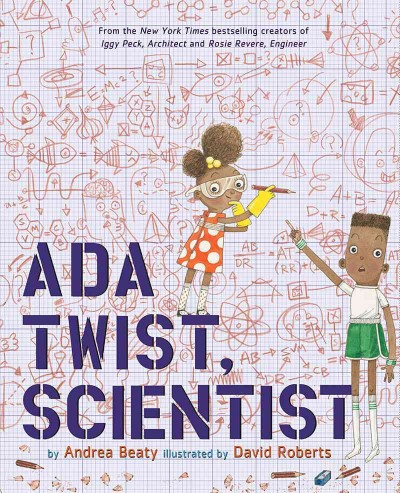
Unless I’m much mistaken, she’s still topping the New York Times bestseller list in the picture book category. I’ll give you some moments to take in the vast implications of this. Pairs particularly well with the upcoming film Hidden Figures.
Baby Loves: Aerospace Engineering!/Quarks! by Ruth Spiro, ill. Irene Chan

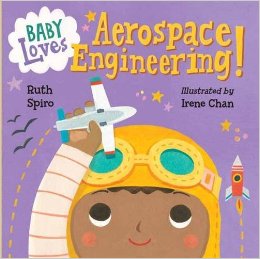
I defended this to you when I put it on the board book list, and I’d willingly do so now. Don’t just assume that due to their format these are meant solely for babies. It’s a kitchy idea that yields a lot of plum rewards. Big concepts are broken down for young people. I can get behind that.
Because of an Acorn by Lola M. Schaefer & Adam Schaefer, ill. Frann Preston-Gannon
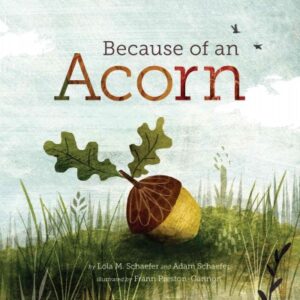
It’s the ciiiiiiircle of liiiiiife . . . and it mooooooves us alllllllll . . .
Coyote Moon by Maria Gianferrari, ill. Bagram Ibatoulline
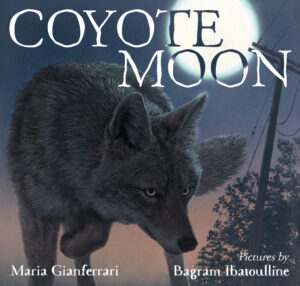
Apparently coyotes roam my own neighborhood’s streets in the summer. I’ve never seen them, but I’m willing to believe it. Jaw-droppingly gorgeous with a surprisingly gripping text, this is sort of like a more fictionalized version of the aforementioned Neighborhood Sharks, only this time with coyotes. In hindsight, I should have put this on the readaloud list too. GREAT readalouding.
Faraway Fox by Jolene Thompson, ill. Justin K. Thompson
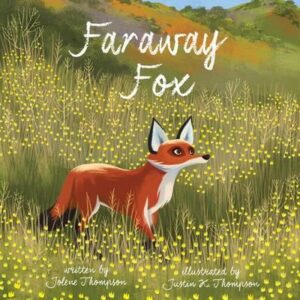
The book follows a single fox blocked off from its fellows by a highway. Humans construct a tunnel under the road for wildlife and the fox is reunited with its kind. Information appears at the end about the real world tunnels, how they are constructed, and some of the challenges they fact. The art, for the record, is also a real draw here. Luscious.
Follow the Moon Home: A Tale of One Idea, Twenty Kids, and a Hundred Sea Turtles by Philippe Cousteau & Deborah Hopkinson, ill. Meilo So
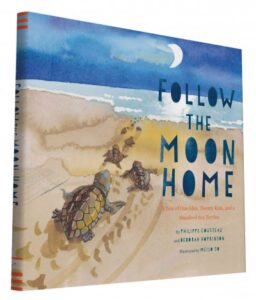
The only Meilo So book out this year? Nope, there’s one coming up later (see if you can guess what it is). Here, a girl attempts to save loggerhead sea turtle babies from man-made light, which means she has to engage in some pretty serious activism. A very cool story, and one I’ve not seen told before.
From Wolf to Woof!: The Story of Dogs by Hudson Talbott
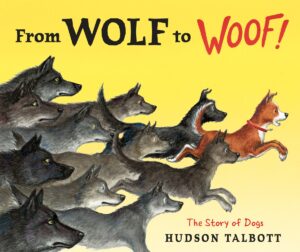
This pairs particularly well with . . .
Grandmother Fish: A Child’s First Book of Evolution by Jonathan Tweet, ill. Karen Lewis
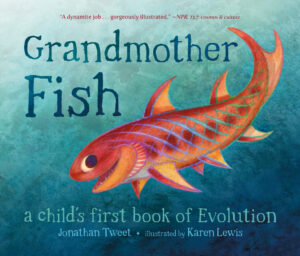
. . . this book. Both cover evolution to a certain extent. This scrappy little Kickstarter title covers ground that few books have on evolution.
Mad Scientist Academy: The Weather Disaster by Matthew McElligott
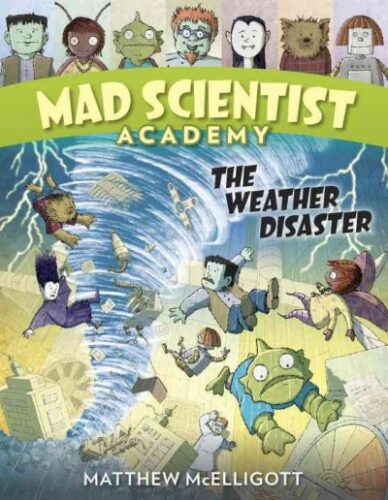
Not a lot of good weather books out this year. This one’s filling a 2016 gap.
Octopus Escapes Again by Laurie Ellen Angus
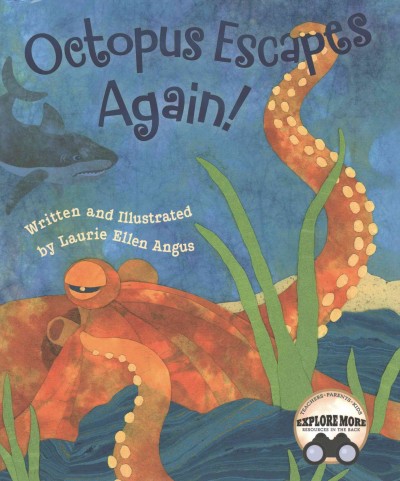
I’m oddly partial to this adorable book and the creature behind it. Always makes me think of this stranger still video, of course.
Olinguito, from A to Z! / Olinguito, de la A a la Z! by Lulu Delacre
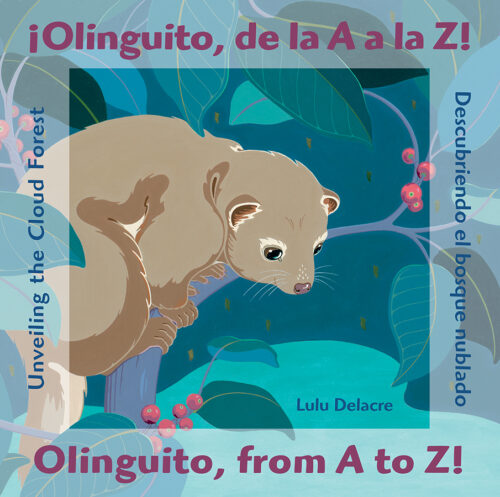
Sure, it’s an alphabet book. Sure it’s bilingual. But it’s actually a really delightful trip into the cloud forest to talk about “discovering” a new animal. Drills home to kids the fact that this is still being done today, barring the destruction of said cloud forest.
Otters Love to Play by Jonathan London, ill. Meilo So

It’s the second Meilo So title on this list today! Hooray! And otters basically just sell themselves. In writing this part of today’s list I just wasted a lot of time watching otters on YouTube for inspiration (have you seen the one of the baby sleeping on its mommy?). In any case, this lives up to its subject matter.
NONFICTION CHILDREN’S BOOKS
Animals by the Numbers: A Book of Infographics by Steve Jenkins
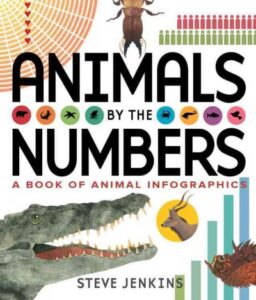
I just recommended this book to a colleague looking for a book to give to a 7-year-old who loves facts and figures and animals too. Couldn’t have come up with anything better! Plus, it’s where I learned that the peregrine falcons that nest on my library every year are the fastest birds in the world.
A Beetle Is Shy by Dianna Hutts Aston, ill. Sylvia Long
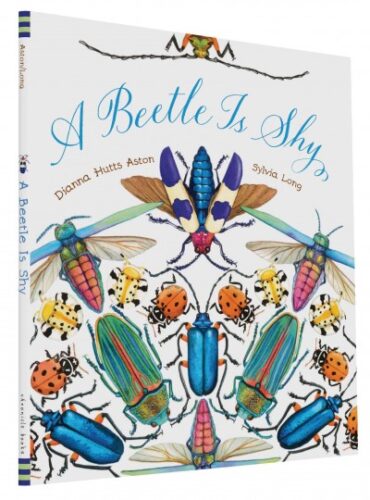
This is a long-standing series but it doesn’t appear to be slowing down in any way, shape, or form. Distinctly fabulous.
The Deadliest Creature in the World by Brena Z. Guiberson, ill. Gennady Spirin
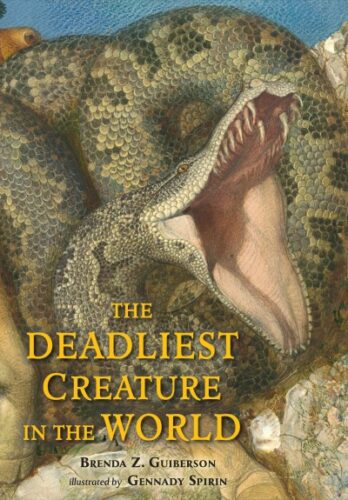
I’m a sucker for a Guiberson/Spirin combo any day of the week. Actually, I’m a sucker for Spirin, period, but his work with Guiberson over the years has never produced a melon. Plus, how do you top that title? Answer: You don’t.
Deep Roots: How Trees Sustain Our Planet by Nikki Tate

I was blown away with this book. Seriously floored. You go into it thinking it’s just another gee-aren’t-trees-great title and what you get instead is this enormously in-depth, serious consideration of how they contribute to the earth. We’ve all heard the statistics on how much oxygen in the atmosphere they produce, but this was the first children’s book I’ve ever read that attempted to explain precisely how their root system works. I’d listened to a RadioLab episode (From Tree to Shining Tree) that explained this and I’m still shocked by the implications. Well done Ms. Tate for filling this book with such pertinent, incredibly up-to-date information!
Dining With Dinosaurs: A Tasty Guide to Mesozoic Munching by Hannah Bonner
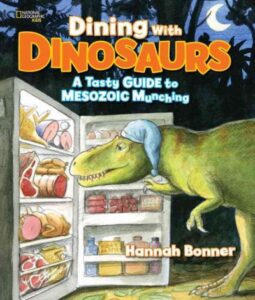
I’m not just sticking this on here because I need a dino title. Trust me, my library shelves are good in that area. But this took a distinctly deep and delightful look at a topic I would have told you had already been covered. Turns out, not so much. A must-add.
Does a Fiddler Crab Fiddle? by Corinne Demas & Artemis Roehrig, ill. John Sandford
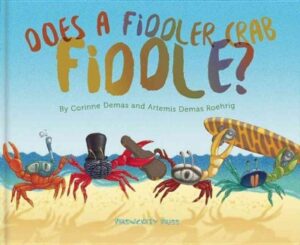
I honestly thought the book was just going to start with fiddler crab and then move on to other animals with evocative names. Nope. Demas and Roehrig are in it for the long haul. The long fiddler crab haul. Good on them!
Feathered Dinosaurs by Brenda Z. Guiberson, ill. William Low
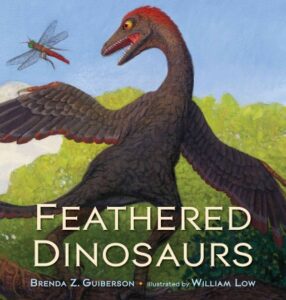
Because you can’t have enough dinosaurs. Or enough Guiberson, for that matter.
Flying Frogs and Walking Fish: Leaping Lemurs, Tumbling Toads, Jet-Propelled Jellyfish, and More Surprising Ways That Animals Move by Steve Jenkins and Robin Page
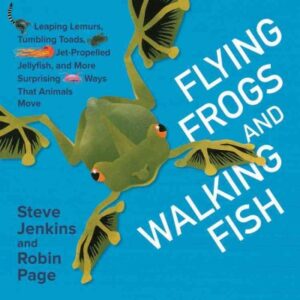
I’d cut that title way way down, but that’s the only thing I’d cut from this highly engaging title (plus it’s always great to see Jenkins and Page working together again).
How Much Does a Ladybug Weigh? by Alison Limentani
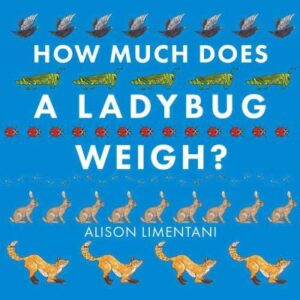
I put this on the math list not too long ago, but it’s also a really interesting, very young, science title. When you consider how much each animal weighs, you find yourself having your assumptions consistently challenged. Math and science = best buds.
I Am NOT a Dinosaur by Will Lach, ill. Jonny Lambert
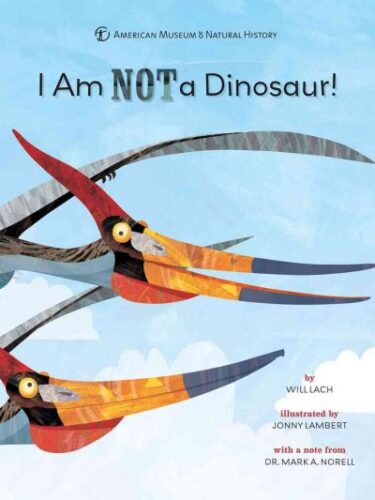
My college, for whatever reason, owned the skeleton of a giant sloth. I remember seeing it for the first time on display, just utterly baffled by what I was looking at. Sloths were giants once? If you’ve a kid, hand them this book and they’ll be able to know this information far sooner than my sad college-aged self.
If You Are a Kaka, You Eat Doo Doo: And Other Poop Tales from Nature by Sara Martel, ill. Sara Lynn Cramb
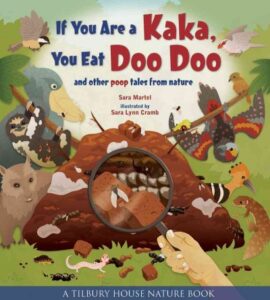
That title’s gonna turn off a bunch of folks right from the start. Maybe that’s not the worst thing, since it really is a book entirely about poop. That said, it’s not gross about it. I mean, there are gross things in it (one word: smearing) but they’re presented in a very matter-of-fact way. If you buy only one poop book this year . . .
My Book of Birds by Geraldo Valerio
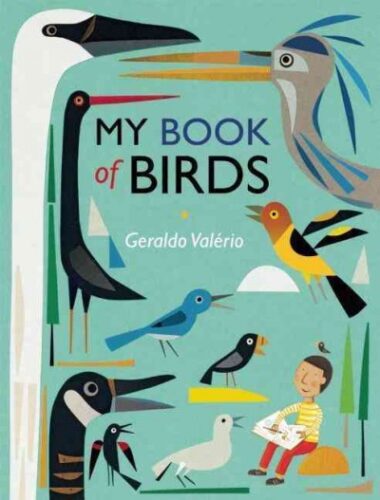
Shockingly lovely from start to finish. A science picture book coffee table book, if you take my meaning.
Natumi Takes the Lead: The True Story of an Orphan Elephant Who Finds Family by Gerry Ellis with Amy Novesky
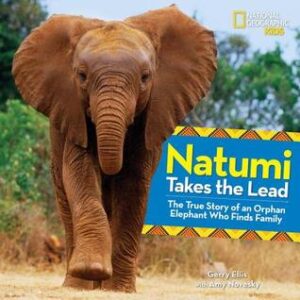
Such a good story, and a good readaloud too. I’d normally avoid any book that traipses this close to anthropomorphism but Gerry and Amy are very careful to place everything in terms true to a baby elephant. Could actually work as a graduation gift picture book as well, come to think of it.
Pink Is for Blobfish: Discovering the World’s Perfectly Pink Animals by Jess Keating, ill. David DeGrand
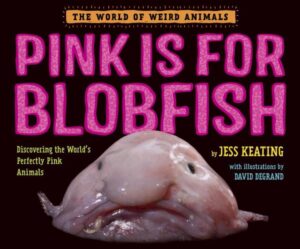
Not solely about the blobfish, alas, but still worth your time thanks to the sheer number of facts packed into these pages.
Plants Can’t Sit Still by Rebecca E. Hirsch, ill. Mia Posada
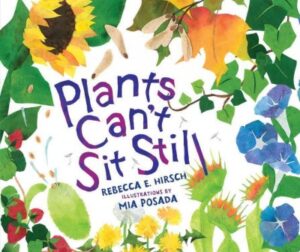
A cute premise. Shows all the different ways that plants get up and go go go!
The Polar Bear by Jenni Desmond
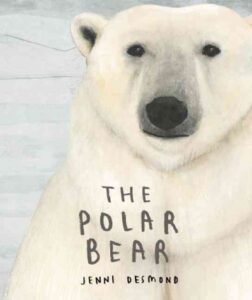
Though it’s not sourced properly (no backmatter to speak of) this is still a truly gorgeous book. It’s the kind of title you can use to either sate the polar bear needs of a true fans, or lure other readers into adoring.
Prairie Dog Song: The Key to Saving North America’s Grasslands by Susan L. Roth and Cindy Trumbore

The prairie, its life, its history, and its possible future are all discussed in this beautifully rendered little book.
The Toad by Elise Gravel
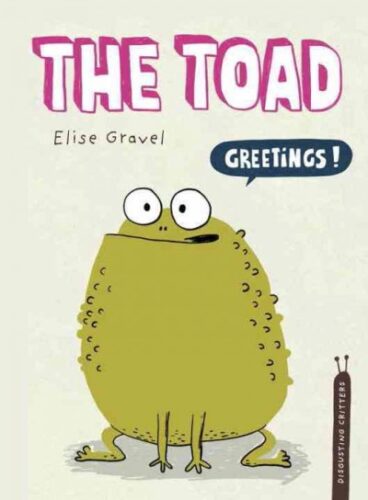
I’m a big fan of all the Gravel series titles. Of the titles out this year, the toad stole my heart. Maybe because I used to catch them in my backyard as a kid. Maybe just because this book’s the funniest.
The Tragic Tale of the Great Auk by Jan Thornhill
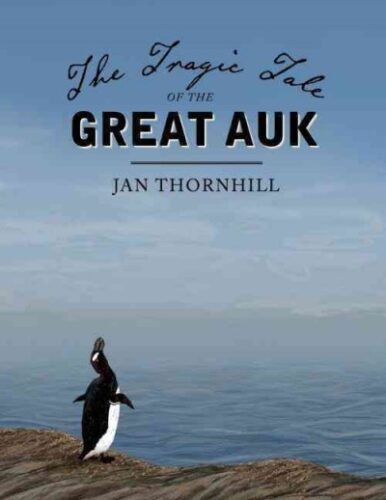
I’m a little ashamed to admit that I had no idea what a Great Auk even was before I read this book. Or, for that matter, that they were gone. Sometimes it feels like the passenger pigeon and the dodo get all the press. Poor auks.
Under Earth / Under Water by Aleksandra Mizielinska and Daniel Mizielinski
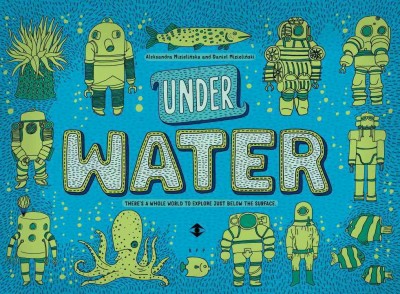
Leave it to the Polish to do something this cool. My kids just dive into this book (no pun intended) since there are so many tiny elements to adore. Again, no backmatter to speak of (European nonfiction titles have that in common) but still awesome. And huge!
What Milly Did: The Remarkable Pioneer of Plastics Recycling by Elise Moser, ill. Scot Ritchie
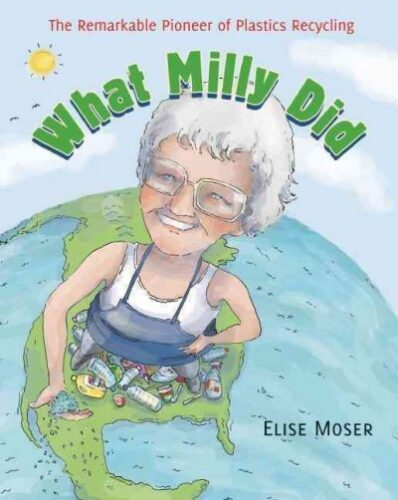
Ever stop to consider the fact that recycling plastics is a relatively new idea? How did it get officially started by vast numbers of cities around the country? A little old woman figured it all out. I love unexpected heroines.
Whoosh! Lonnie Johnson’s Super-Soaking Stream of Inventions by Chris Barton, ill. Don Tate
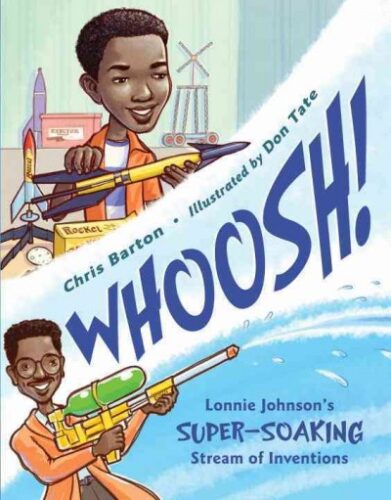
I’m keen on unexpected heroes too. This book is great because it shows that you don’t have to come up with polio vaccine to be considered an inventor. Plus this guy (A) made something cool and (B) is still alive! Once in a while you get a kid in your library who has to check out a bio on someone still alive. Now you’ve an ace in your back pocket.
Whose Eye Am I? by Shelley Rotner

Look them in the eye and tell them you’re not interested in this book. Go on. Tell them.
Interested in the other lists of the month? Here’s the schedule so that you can keep checking back:
December 1 – Board Books
December 2 – Board Book Adaptations
December 3 – Nursery Rhymes
December 4 – Picture Book Readalouds
December 5 – Rhyming Picture Books
December 6 – Alphabet Books
December 7 – Funny Picture Books
December 8 – Calde-Nots
December 9 – Picture Book Reprints
December 10 – Math Picture Books
December 11 – Bilingual Books
December 12 – International Imports
December 13 – Books with a Message
December 14 – Fabulous Photography
December 15 – Fairy Tales / Folktales
December 16 – Oddest Books of the Year
December 17 – Older Picture Books
December 18 – Easy Books
December 19 – Early Chapter Books
December 20 – Graphic Novels
December 21 – Poetry
December 22 – Fictionalized Nonfiction
December 23 – American History
December 24 – Science & Nature Books
December 25 – Transcendent Holiday Titles
December 26 – Unique Biographies
December 27 – Nonfiction Picture Books
December 28 – Nonfiction Chapter Books
December 29 – Novel Reprints
December 30 – Novels
December 31 – Picture Books

Six Dots. Jen Bryant. Illustrated by Boris Kulikov. 2016. Random House. 40 pages. [Source: Review copy]
First sentence: On the day I was born, Papa announced me to the village: "Here is my son Loo-Wee!"
Premise/plot: Six Dots is a picture book biography of Louis Braille. It is probably best for older readers because there is a lot of text.
Here's one of my favorite quotes, "I didn't want people to feel sorry for me. I just wanted to read and to write on my own, like everyone else."
The end papers include the braille alphabet, just not in braille. (It would have been great fun if the braille alphabet and the quote by Helen Keller, "We the blind, are as indebted to Louis Braille as mankind is to Gutenberg." had actually been in braille so readers--of all ages--could feel Braille for themselves.)
My thoughts: I liked this one. It is a very personal, compelling story.
Text: 4 out of 5
Illustrations: 4 out of 5
Total: 8 out of 10
© 2016 Becky Laney of
Becky's Book Reviews
I Am Jane Goodall. Brad Meltzer. 2016. 40 pages. [Source: Library]
First sentence: I am Jane Goodall. On my first birthday, my father bought me a cuddly toy chimpanzee named Jubilee.
Premise/plot: I Am Jane Goodall is a picture book biography of Jane Goodall for young readers by Brad Meltzer. It uses text and speech bubbles throughout to give details of her life and her work. It is packed with plenty of information, and a great message or two.
My thoughts: I found this one slightly problematic. Not because of the text itself necessarily. But because of the illustrations. Jane Goodall is illustrated exactly the same throughout the book. It doesn't matter if she's one or eighty. As a one year old, she's got white hair pulled back in a ponytail. As an adult working in the jungle, she's the exact same height as when she's one and in a baby carriage. She's surrounded by ADULTS, during ADULT WORK, supposed to be one of the best, most qualified, most experienced in her field, and she's the size of a toddler. Why is this okay?!
That being said. I found the text interesting enough.
© 2016 Becky Laney of
Becky's Book Reviews
So Kailana (
The Written Word) and I are teaming up again...this time to celebrate CHRISTMAS. 25 days of answering questions! You are definitely welcome to join in on the fun!
Day after Christmas traditions...
Honestly. Does staying at home count as tradition? I don't really do much shopping if I can help it. A decade or two ago it was different. I remember getting gift certificates and wanting to spend them right away! Or there was always one or two things that Santa forgot that I wanted to see if I could buy for myself. But now, not so much.
© 2016 Becky Laney of
Becky's Book Reviews
The Lost Gift. Kallie George. Illustrated by Stephanie Graegin. 2016. Random House. 40 pages. [Source: Review copy]
First sentence: One windy Christmas Eve, four little animals huddled on top of Merry Woods Hill. They were so excited, they barely felt the cold. They were waiting for Santa to fly by on his sleigh.
Premise/plot: Four animals (Rabbit, Deer, Squirrel, and Bird) are super-excited to see Santa fly past on his sleigh. But when Santa drops a present in the woods--by mistake--the animals have a decision to make. Will they find the present and help the present get delivered? Or will they let it be since it doesn't concern them?
My thoughts: I really loved this story! I loved how the animals worked together to get the present delivered to the new baby at the farm. I loved how glad the animals were to see the baby receive the present and open it! I loved how their thoughtfulness was rewarded by Santa, who always knows.
Text: 5 out of 5
Illustrations: 4 out of 5
Total: 9 out of 10
© 2016 Becky Laney of
Becky's Book Reviews
 For a year or two I helped sit on the committee for the New York Historical Society’s book prize. Each year it goes to books that, “… honor the best children’s historical literature and encourage authors to continue to create engaging and challenging narratives that provide a window into the past for middle readers and their families.” And, oh ye poor starving middle grade historical fiction writers, it gives you a whopping $10,000, so get your publishers to submit your name next year.
For a year or two I helped sit on the committee for the New York Historical Society’s book prize. Each year it goes to books that, “… honor the best children’s historical literature and encourage authors to continue to create engaging and challenging narratives that provide a window into the past for middle readers and their families.” And, oh ye poor starving middle grade historical fiction writers, it gives you a whopping $10,000, so get your publishers to submit your name next year.
I’m in Illinois now, but I miss it. It used to be that I’d gather up a bunch of names of potential candidates each year. The books would have to highlight a specific moment in American history. After all, just because a book is set in the past, that doesn’t mean it’s necessarily saying something about a distinct historical moment. And when I started putting these lists together, I thought about doing the same thing. Only this time I’m going to include picture books as well.
Here is a collection of some of the most interesting American historical works for kids out this year. Split, as you can see, into Fictional Picture Books, Non-Fiction Picture Books, and Middle Grade Novels.
2016 American History for Kids
Fiction Picture Books
Diana’s White House Garden by Elisa Carbone, ill. Jen Hill
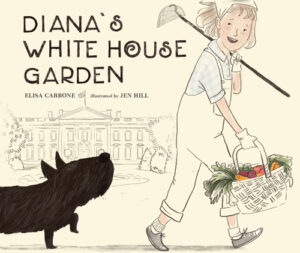
Historical Moment: WWII.
Doing Her Bit: A Story About the Women’s Land Army of America by Erin Hagar, ill. Jen Hill
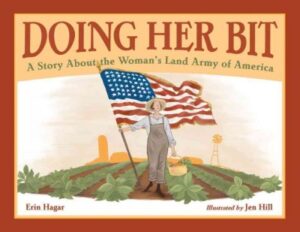
Historical Moment: WWII.
Freedom in Congo Square by Carole Boston Weatherford, ill. R. Gregory Christie
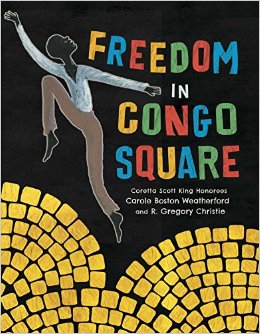
Historical Moment: American slavery in 19th century Louisiana
Freedom Over Me: Eleven Slaves, Their Lives and Dreams Brought to Life by Ashley Bryan
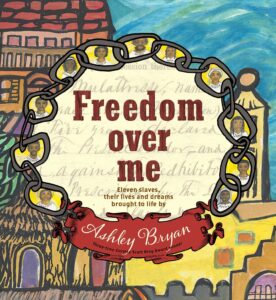
Historical Moment: Slavery in America. Specifically in 1828.
Jazz Day: The Making of a Famous Photograph by Roxane Orgill, ill. Francis Vallejo
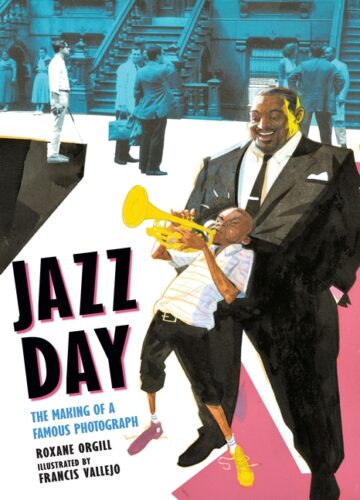
Historical Moment: 1958 when Art Kane gathered together the greatest living jazz musicians for one photograph.
Miss Paul and the President: The Creative Campaign for Women’s Right to Vote by Dean Robbins, ill. Nancy Zhang
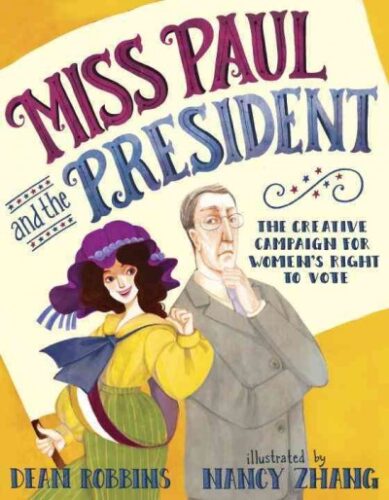
Historical Moment: Women’s suffrage. Culminates in 1920.
My Name is James Madison Hemings by Jonah Winter, ill. Terry Widener
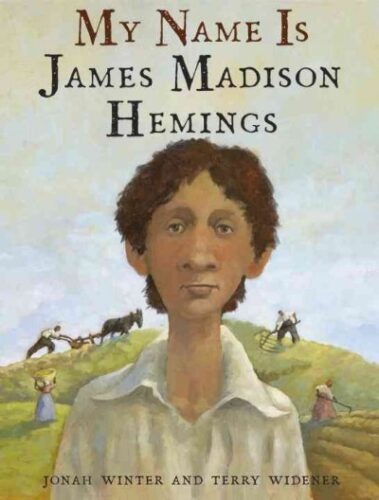
Historical Moment: Slavery in America. Specifically during and after the presidency of Thomas Jefferson.
Steamboat School by Deborah Hopkinson, ill. Ron Husband
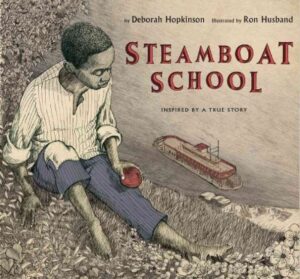
Historical Moment: 1847 in St. Louis after the passage of a Missouri law prohibiting the education of African-Americans.
Non-Fiction Picture Books
Around America to Win the Vote: Two Suffragists, a Kitten, and 10,000 Miles by Mara Rockliff, ill. Hadley Hooper
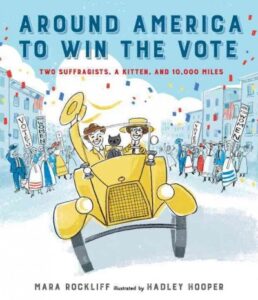
Historical Moment: Women’s Suffrage. Specifically it begins in April of 1916.
Elizabeth Started All the Trouble by Doreen Rappaport, ill. Matt Faulkner
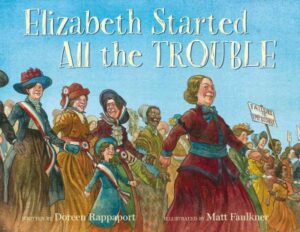
Historical Moment: Women’s Suffrage from the beginning to the end.
The First Step: How One Girl Put Segregation on Trial by Susan E. Goodman, ill. E.B. Lewis
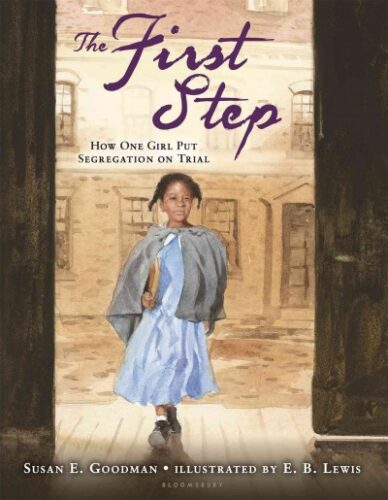
Historical Moment: Segregation. Follows the 1847 (the same year as Steamboat School!) Supreme Court case that ended segregation in Boston’s schools.
Lincoln and Kennedy: A Pair to Compare by Gene Barretta
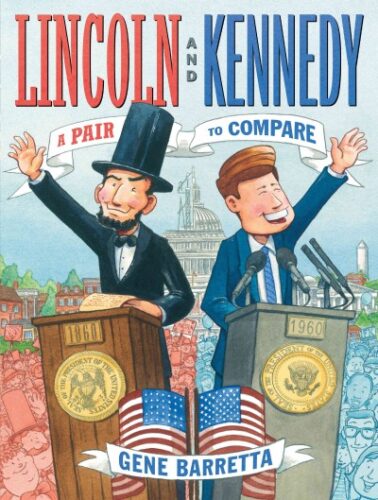
Historical Moments: The presidencies of both Abraham Lincoln and John Kennedy.
The Navajo Code Talkers by J. Patrick Lewis, ill. Gary Kelley
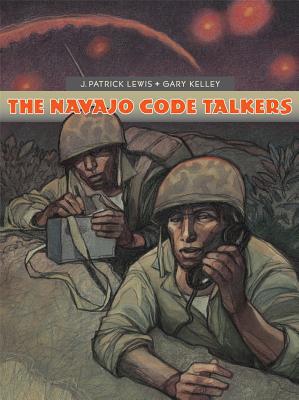
Historical Moment: WWII.
Saved By the Boats: The Heroic Sea Evacuation of September 11 by Julie Gassman, ill. Steve Moors
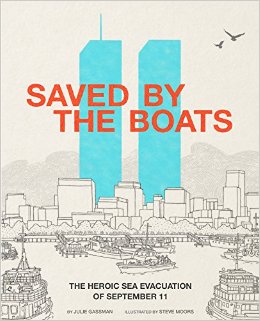
Historical Moment: September 11, 2001.
The Seagoing Cowboy by Peggy Reiff Miller, ill. Claire Ewart
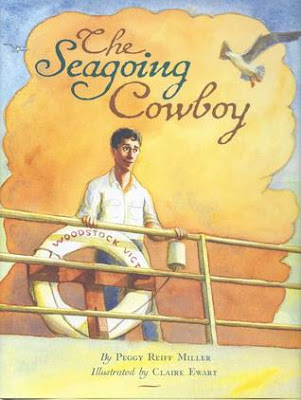
Historical Moment: Post-WWII America’s aid to Poland in 1945. Review of the book at the WWII children’s book blog The Children’s War here.
The Secret Subway by Shana Corey, ill. Red Nose Studio
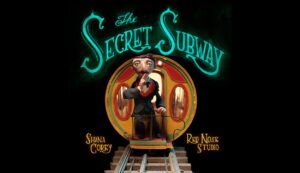
Historical Moment: New York City in the 1860s and 1870s. Specifically the time of Boss Tweed.
A Spy Called James: The True Story of James Lafayette, Revolutionary War Double Agent by Anne Rockwell, ill. Floyd Cooper
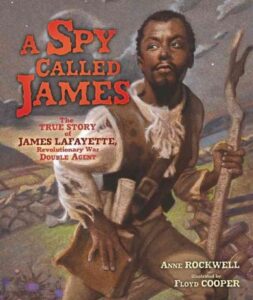
Historical Moment: The Revolutionary War.
Middle Grade Fiction
Makoons by Louise Erdrich
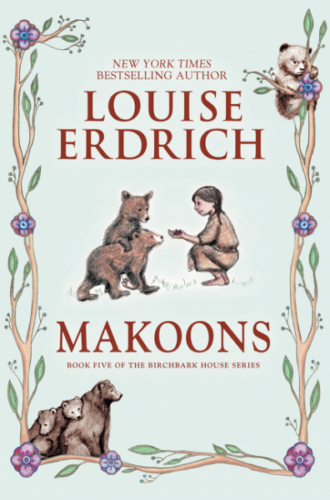
Historical Moment: The Great Plains of the Dakota Territory in 1866.
Snow White: A Graphic Novel by Matt Phelan
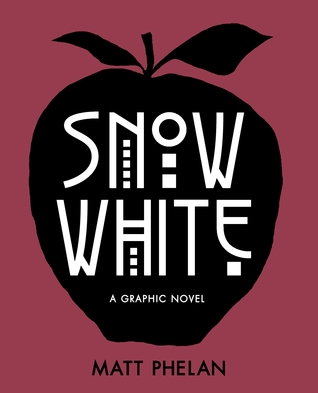
Historical Moment: The Great Depression in New York City.
Interested in the other lists of the month? Here’s the schedule so that you can keep checking back:
December 1 – Board Books
December 2 – Board Book Adaptations
December 3 – Nursery Rhymes
December 4 – Picture Book Readalouds
December 5 – Rhyming Picture Books
December 6 – Alphabet Books
December 7 – Funny Picture Books
December 8 – Calde-Nots
December 9 – Picture Book Reprints
December 10 – Math Picture Books
December 11 – Bilingual Books
December 12 – International Imports
December 13 – Books with a Message
December 14 – Fabulous Photography
December 15 – Fairy Tales / Folktales
December 16 – Oddest Books of the Year
December 17 – Older Picture Books
December 18 – Easy Books
December 19 – Early Chapter Books
December 20 – Graphic Novels
December 21 – Poetry
December 22 – Fictionalized Nonfiction
December 23 – American History
December 24 – Science & Nature Books
December 25 – Transcendent Holiday Titles
December 26 – Unique Biographies
December 27 – Nonfiction Picture Books
December 28 – Nonfiction Chapter Books
December 29 – Novel Reprints
December 30 – Novels
December 31 – Picture Books

Lucky Lazlo. Steve Light. 2016. Candlewick. 32 pages. [Source: Review copy]
First sentence: Lazlo was in love. He bought a rose from the flower-seller. The last red one--how lucky!
Premise/plot: Lucky Lazlo follows the adventures--or misadventures--of a young man, Lazlo, in love. His love is starring in a play, Alice in Wonderland. In fact, she's the star of the show, Alice. The show is premiering on a Friday at the Peacock Theater. This picture book is a comedy. The simple act of buying a flower for the one you love becomes a chaotic, hilarious riot of a book. And it all starts with a CAT who snatches Lazlo's rose.
My thoughts: I thought this one was charming even before I read the author's note. But. After reading the author's note, it went from "really like" to LOVE. Light has taken a LOT of theater superstitions and woven together a story that uses just about all of them--for better or worse! And his illustrations are both simple and complex. His use of color is simple, understated. But his use of detail is very complex indeed.
Text: 5 out of 5
Illustrations: 5 out of 5
Total: 10 out of 10
© 2016 Becky Laney of
Becky's Book Reviews
Will's Words: How William Shakespeare Changed The Way You Talk. Jane Sutcliffe. Illustrated by John Shelley. 2016. Charlesbridge. 40 pages. [Source: Library]
First sentence: Dear Reader: We have to talk. I have failed you. I set out to write a book about the Globe Theatre and its great storyteller, William Shakespeare. About how the man was an absolute genius with words and wove those words into the most brilliant and moving plays ever written. But that's just the trouble. You see, I wanted to tell you the story in my own words. But Will Shakespeare's words are there, too, popping up all over the place. It's not my fault. Really. Will's words are everywhere. They're bumping into our words all the time, and we don't even know it.
Premise/plot: Sutcliffe's picture book for older readers does a great job introducing readers to the sixteenth century theatre. And her emphasis on "Will's Words" shows the relevance Shakespeare still has in today's world. It is part narrative. But on each spread, she focuses on words--phrases--Shakespeare either invented himself (coined) OR kept alive (sustained) through the longevity of his plays. She uses the word or phrase in her narrative, and then explains it. Each word is explained and/or defined. Sometimes this includes "what it meant then, what it means now." But she also always includes: WHERE it came from--which play, which act, which scene.
Words include:- for goodness' sake
- what's done is done
- too much of a good thing
- outbreak
- excitement
- of a sudden
- wild goose chase
- fashionable
- money's worth
- hurry
- with bated breath
- a sorry sight
- heart's content
- well behaved
- send him packing
- good riddance
- love letter
- laugh oneself into stitches
- foul play
- make your hair stand on end
- cold-blooded
- hot-blooded
- bloodstained
- dead as a doornail
- seen better days
- into thin air
- amazement
- the short and long of it
- not budge an inch
- eaten out of house and home
- green-eyed monster
- household words
My thoughts: I really loved this one. It is for older readers. I don't think the typical preschooler is going to care about the word origin of the phrase "dead as a doornail." But for older students (mid-to-upper elementary on up) what a treat!!! Be sure to watch the Horrible Histories music video about Shakespeare! © 2016 Becky Laney of
Becky's Book Reviews
Walk This World At Christmastime. Illustrated by Debbie Powell. 2016. Candlewick. 24 pages. [Source: Review copy]
First sentence: Walk this world at Christmastime. Let's take a stroll around the world, to all four corners of the globe. Peek through windows, open doors, watch as Christmastime unfolds.
Premise/plot: Readers "visit" many different countries at Christmastime. Each two-page spread takes readers to a new destination. The stops include Canada and the United States; Mexico, Bolivia, and Brazil; Nigeria, South Africa, and Ethiopia; Spain, France, Italy, and Greece; Holland, Austria, and Germany; U.K., Sweden, Norway, and Finland; Poland, Ukraine, and Russia; Lebanon, Iraq, Pakistan, and India; China, Japan, and the Philippines; Australia, New Zealand, and Samoa. Each two-page spread features a riddle, of sorts, asking readers to guess where they are. Each two spread also features a LOT of flaps to open. Behind each flap is a fact.
Some of the things we learn on this journey:
- During Las Posadas, children dress as Mary and Joseph and go from house to house asking to be let in.
- Leave out your shoes to get presents from the Three Wise Men.
- Calabar Carnival, in Nigeria, is Africa's biggest street party. Get ready for parades, masquerades, and dancing.
- An old Greek custom, recently revived, is to decorate real and model ships with lights at Christmastime.
- In Holland, leave out your clogs for Saint Nicholas. Don't forget a carrot for his horse!
- A Nutcracker doll is a traditional German gift.
- The first Christmas card was sent in the U.K. in 1843.
- In Russia, Father Frost brings children presents, accompanied by the Snow Maiden.
- In Iraq, Christian families light a bonfire and recite passages from the Bible.
- In India, banana trees are decorated for Christmas.
- The Chinese give gifts of apples on Christmas Eve.
- In Samoa, people feast on December 24, then go to church, dressed in white, on Christmas Day.
My thoughts: This one is packed with information. I definitely found it interesting. I'm not the biggest fan of lift-the-flap books. But I think this one works.
© 2016 Becky Laney of
Becky's Book Reviews
So Kailana (
The Written Word) and I are teaming up again...this time to celebrate CHRISTMAS. 25 days of answering questions! You are definitely welcome to join in on the fun!
Christmas traditions...
family time--eating together, opening presents, talking, listening to music, watching movies.
© 2016 Becky Laney of
Becky's Book Reviews
 Earlier this year I had a lovely lunch with an author of nonfiction titles for kids. As we discussed the wide range of nonfiction available to children these days she lamented the fact that we’ve become so narrow in what we deem worthy of our children’s attention. Sticking strictly to what we consider to be the “facts” can be unnecessarily fraught. Then again, things like fake dialogue and just generally making up stuff can be more than problematic. But how can any nonfiction picture book be considered wholly accurate when illustrations are, by their very nature, imaginings on the part of an artist? And around and around and around these arguments go.
Earlier this year I had a lovely lunch with an author of nonfiction titles for kids. As we discussed the wide range of nonfiction available to children these days she lamented the fact that we’ve become so narrow in what we deem worthy of our children’s attention. Sticking strictly to what we consider to be the “facts” can be unnecessarily fraught. Then again, things like fake dialogue and just generally making up stuff can be more than problematic. But how can any nonfiction picture book be considered wholly accurate when illustrations are, by their very nature, imaginings on the part of an artist? And around and around and around these arguments go.
For me, the simplest answer is simply to take a knife and cut your children’s nonfiction into two parts. On one side you can have your books that stick as closely as possible to the truth. No fake dialogue. No goofy imaginings. Staid. Solid. Steady. Then, on the other side, come the creative interpretations. Books that work to engage young readers with more fictionalized elements. Those are the books we’re going to celebrate today. They’re sometimes wholly fictionalized, sometimes mostly true, and always very interesting. Enjoy!
2016 Fictionalized Non-Fiction for Kids
Arnold’s Extraordinary Art Museum by Catherine Ingram, ill. Jim Stoten
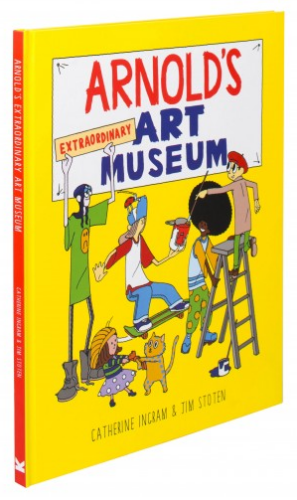
Anyone can celebrate famous art. How many books for kids chose instead to highlight some of the more obscure pieces out there in the world? For adults and kids that are sick to death of the Mona Lisa or Michaelangelo’s David, Ingram’s book comes as a strange little antidote. Here you’ll find the Bauhaus Metal Party of 1929 or Pablo Picasso’s bull, as well as a slew of others as our host, Arnold, leads a tour of his extraordinary museum. Plus there’s humor. Lest we forget.
The Artist and Me by Shane Peacock, ill. Sophie Casson
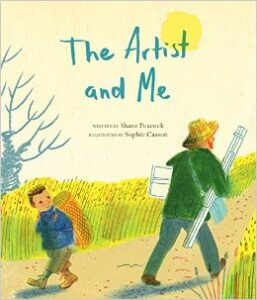
There are lots of books about children meeting famous artists. There are very few about children meeting famous artists with the sole purpose of making those artists miserable. A lot of what I like about Peacock’s book is her willingness to feature a protagonist in the wrong. A boy teases Vincent Van Gogh alongside the other people of his village, though deep down he knows that there’s more here than meets the eye. The whole book is tinged with an odd sort of regret, as the now grown boy looks back on what might have been. The melancholy is a kind of allure in and of itself, and Casson’s illustrations do not attempt to replicate Van Gogh’s paintings, yet it does invoke them in some way.
Freedom Over Me: Eleven Slaves, Their Lives and Dreams Brought to Life by Ashley Bryan

The articles of sale for the slaves are real. The names of the slaves (or lack thereof) and areas of expertise are real. But for the poems Ashley Bryan had to rely on his own expansive memory to weave lives out of scant words. As I said in my review of this book, “Ashley Bryan does everything within his own personal capacity to keep these names and these people alive, if just for a little longer. Along the way he makes it clear to kids that slaves weren’t simply an unfortunate mass of bodies. They were architects and artists and musicians. They were good and bad and human just like the rest of us.”
From Wolf to Woof!: The Story of Dogs by Hudson Talbott

The story of how wolves became man’s best friend is presented with a possible scenario on the start. The scenario cannot, by rights, be considered strictly factual. Then again, often as librarians we’ll give a pass to books that contain groups doing one thing or another on the page because the writer is being vague enough with the reader (does that make sense?). This is a story as much as it’s a lesson in evolution and I think child readers will better grasp what Talbott’s trying to say because of the way in which he says it.
The Great Antonio by Elise Gravel
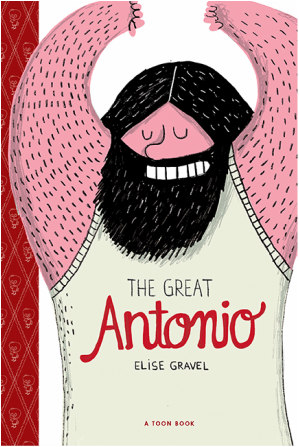
Straddles the line between fiction and nonfiction. In fact, Horn Book said of the book that it is, “not quite a biography yet not quite a legend.” Kirkus, for their part, hit the nail on the head when they said that, “The comedic treatment never mocks Antonio but celebrates him in all his weird glory.” And since I’m just quoting the professional reviews here, let’s end with a line from Publishers Weekly that really makes it clear why this book is special. “What’s to be made of lives that don’t go the way they were supposed to? Gravel shows that they’re worth paying attention to.” Amen that.
Jazz Day: The Making of a Famous Photograph by Roxane Orgill, ill. Francis Vallejo

The most fictionalized non-fiction on this list, in a way. The facts are there, but because Orgill enters into the head of some of the characters (like the kid on the cover, for example) it’s not technically non-fiction. Fiction and non-fiction get swished all together so that you have to be diligent to figure out how to separate out the two. What it is is cool.
Lift Your Light a Little Higher: The Story of Stephen Bishop: Slave-Explorer by Heather Henson, ill. Bryan Collier
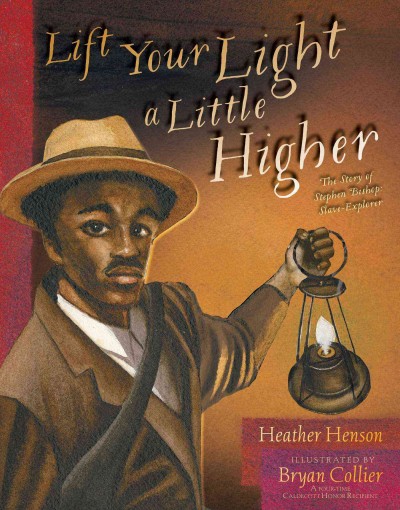
So let’s talk about what happens when someone writes a picture book biography. If the subject isn’t someone who gets a lot of biographies already, like a Lincoln or a Rosa Parks, then telling their tale means doing a little extra work. You have to find those little moments of humanity throughout their life that allow the reader to connect with the hero. You also need to pick and choose how much of their life to discuss. And finally, you need to do all of this in a fun and child-centric way. When including dialogue, you have to source what’s said by the characters in the backmatter. It could be rigorously footnoted or it could just be a quickie statement that says the dialogue came from this book or that interview. When it’s not sourced I, the librarian, have to assume it’s fake. And in the case of this book, the choice to write it in the first person makes it trickier still. It’s a true piece of fictionalized non-fiction, and a very interesting read it is too. Be sure to pair it with the (now sadly out-of-print) Journey to the Bottomless Pit: The Story of Stephen Bishop and Mammoth Cave by Elizabeth Mitchell. Dang good book that.
Lost and Found: Adele & Simon in China by Barbara McClintock
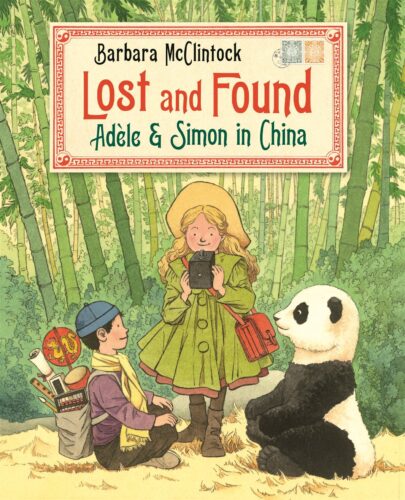
A new Adele and Simon title is a cause for celebration, and here McClintock outdoes herself. Each spread in this book is chock full of details about turn-of-the-century China. Devoid of even a whiff of a Boxer Rebellion, it nonetheless gives a thorough accounting of what the different regions looked like.
Mad Scientist Academy: The Weather Disaster by Matthew McElligott

This is another case of my loving the sequel better than the original. Why Dreamworks hasn’t snapped this series up for its next big budget blockbuster is beyond me (a school full of mad scientists and monsters writes itself) these books are basically Magic School Bus sans “Bus”. The students must solve laughably out-of-control situations using their brains, and readers learn something along the way. In this particularly case it’s all about the weather. For the weather obsessed, the mad scientist obsessed, the monster obsessed, and the just generally obsessed.
A Moon of My Own by Jennifer Rustgi, ill. Ashley White
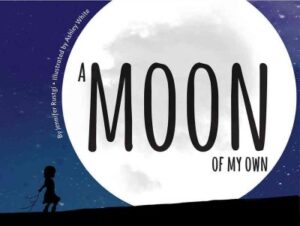
When my daughter was younger we were walking home one night and she pointed out the moon to me. “Like Harold”, she said, which took me a minute. Only after much thought was I reminded of the fact that in Harold and the Purple Crayon the moon “follows” Harold home. In this book Rustgi takes the same premise, with a little girl “followed” by the moon. In the back of the book it, “explains each topic the girl wonders about, describes and maps the places she visits on her adventure, describes the phases of the moon and gives further facts, and provides activities that can help children understand why the moon appears to change” (or so sayeth Kirkus). I like books with facts in the back. I like that books that go overboard with the facts in the back even more.
Mr. Matisse and His Cutouts by Annemarie van Haeringen
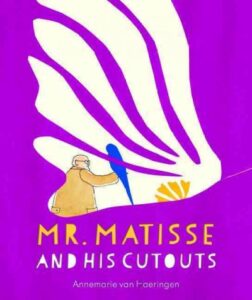
Sometimes I feel like artists get more straight up fictional picture books about their lives than members of other professions. The book covers the time in Matisse’s live when he moved from paints to paper cutouts, making it clear to kids that great art can be done with something as simple as scissors if the spirit is willing. I like books that make art accessible to kids. This certainly fits the bill.
My Name is James Madison Hemings by Jonah Winter, ill. Terry Widener

One of the things that I like about Jonah Winter is that he never makes anything easy on himself. A fictionalized picture book portrait of one of the sons of Thomas Jefferson and Sally Hemings? Don’t say it could never be done because it just was. I suppose I should have included this on my list of picture books for older readers since reading this book requires a certain level of sophistication on the part of the reader. What I really love about it, though, is that it never goes for easy answers. Hemings is left with questions about his father that will never be answered, and so are we.
My Washington D.C. by Kathy Jakobsen
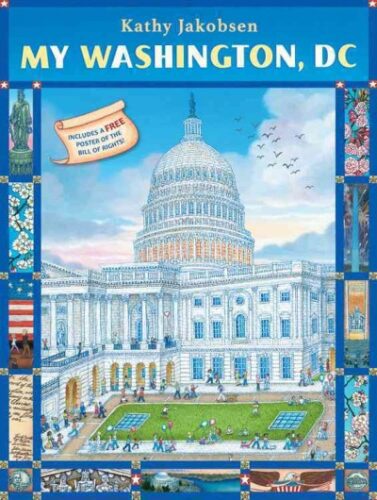
Let it never be said that Jakobsen is not meticulous in her renderings. Twelve sites around Washington D.C. are visited by two kids. While they offer up a kind of travelogue about the city, we get to admire the folk arty stylings of Jakobsen’s clever paints. She did this with NYC back in the day and I can tell you that every single library branch of NYPL uses it constantly. So glad she’s back.
Octopus Escapes Again! by Laurie Ellen Angus

Part story / part array of surprising octopus facts, this is one of the many octopus-related titles to come out this year. And, let’s be honest, one of the best.
The Polar Bear by Jenni Desmond

You ever have that thing where you were totally into a book or a band or an obscure film and then before you can declare your love of it to the world lots of other people go about discovering it too? I read this book a while ago and was going to be very excited to include it on this list. Then it up and appears on the New York Times Best Illustrated list for 2016. It’s garnered a couple other honors along the way as well. Doggone it. I was into The Polar Bear before it was cool, y’all.
Six Dots: A Story of Young Louis Braille by Jen Bryant, ill. Boris Kulikov
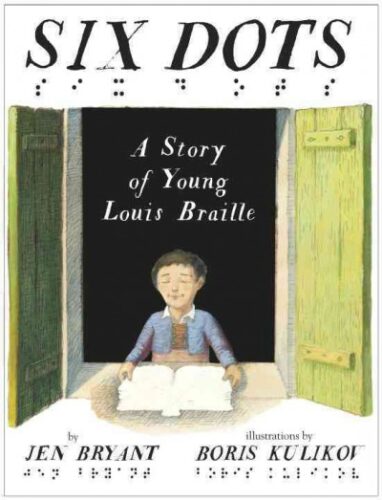
Like Lift Your Light a Little Higher, this book tells the story of its hero from the hero’s perspective. So while everything in it is technically accurate, Braille never directly said any of the stuff in this book so it sort of ends up as a picture book. Or does it matter to you where it ends up so long as it’s somewhere? Though it seemed odd to me that there wasn’t any actual Braille within the book or on the cover (Braille that you could feel, that is) it’s a moving portrait, lovingly rendered.
Steamboat School by Deborah Hopkinson, ill. Ron Husband

Oh, I like this book so much!! I discovered it a little late in the year and was so taken with it that I immediately took it home to read to my own kids. Based on an actual steamboat school built by the Reverend John Berry Meachum to operate outside the confines of an unjust law, Hopkinson tells a fictionalized version about a free black boy living in St. Louis in 1847 and how he comes to an education against extreme odds. The telling is stellar and Husband’s art a fun antidote to the stodgy realism this kind of story would usually inspire.
Swimming with Sharks: The Daring Discoveries of Eugenie Clark by Heather Lang, ill. Jordi Solano
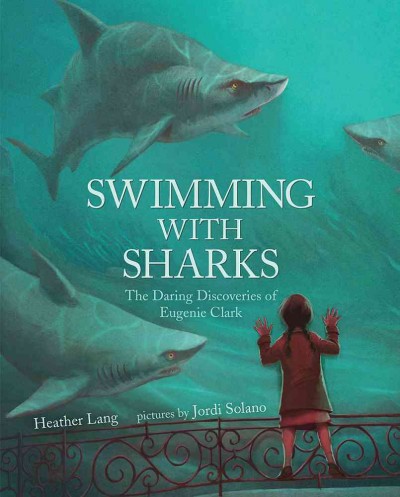
The story of the Japanese-American shark research pioneer is fascinating. I love it when a more obscure subject gets some attention in a book. My notes inform me that it’s on this list here today because it has “fake dialogue” in it. There are also faux notebook pages with simple facts about the species. Take all that with a grain of salt since Ms. Clark herself was real and this story is definitely worth discovering.
The Tudors: Kings, Queens, Scribes and Ferrets! by Marcia Williams

If you’ve read one Marcia Williams title then you know what to expect here. Like a Cricket Magazine on speed, Williams fills her margins with chatty cathys. In this case they’re mostly ferrets.
A Voyage in the Clouds: The (Mostly) True Story of the First International Flight by Balloon in 1785 by Matthew Olshan, ill. Sophie Blackall
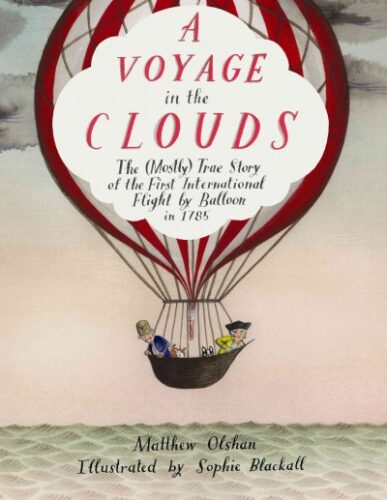
Olshan and Blackall paired previously with another fact/fiction hybrid, that time called The Mighty Lalouche. When it came out, critics and librarians weren’t entirely certain what to do with it. This follow up about a true air voyage above (and almost in) the sea is a bit more accessible. It’s very funny and chock full of interesting facts about early aerial travel. Try pairing it with the Caldecott Honor winning book Hot Air: The (Mostly) True Story of the First Hot-Air Balloon Ride illustrated and written by Marjorie Priceman
Yaks Yak: Animal Word Pairs by Linda Sue Park, ill. Jennifer Black Reinhardt
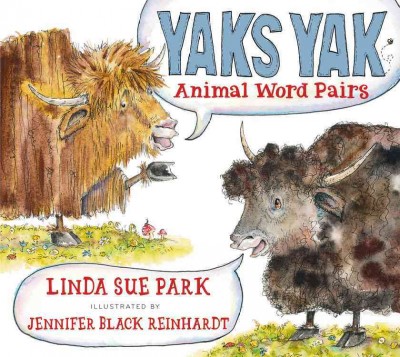
Occasionally an animal word pair book will come out, but rarely will it be as pleasing to the eye and funny as this. PW said it was, “Gleeful linguistic fun that kids will wolf down.” Yep. Pretty much.
Interested in the other lists of the month? Here’s the schedule so that you can keep checking back:
December 1 – Board Books
December 2 – Board Book Adaptations
December 3 – Nursery Rhymes
December 4 – Picture Book Readalouds
December 5 – Rhyming Picture Books
December 6 – Alphabet Books
December 7 – Funny Picture Books
December 8 – Calde-Nots
December 9 – Picture Book Reprints
December 10 – Math Picture Books
December 11 – Bilingual Books
December 12 – International Imports
December 13 – Books with a Message
December 14 – Fabulous Photography
December 15 – Fairy Tales / Folktales
December 16 – Oddest Books of the Year
December 17 – Older Picture Books
December 18 – Easy Books
December 19 – Early Chapter Books
December 20 – Graphic Novels
December 21 – Poetry
December 22 – Fictionalized Nonfiction
December 23 – American History
December 24 – Science & Nature Books
December 25 – Transcendent Holiday Titles
December 26 – Unique Biographies
December 27 – Nonfiction Picture Books
December 28 – Nonfiction Chapter Books
December 29 – Novel Reprints
December 30 – Novels
December 31 – Picture Books

Smart Fat. Steven Masley and Jonny Bowden. 2016. HarperOne. 336 pages. [Source: Library]
First sentence:
Not too long ago, we were both advocating specific diets for weight loss and wellness.
We weren't just advocates of these plans--we built our professional lives around these two seemingly contradictory nutritional philosophies. Premise/plot: "Eat more fat. Lose more weight. Get healthy now." Thus the front cover proclaims proudly. This diet book urges a 5-5-10 eating program. 5 Servings of smart fat, 5 Servings of clean (or at least lean) protein, and 10 servings of fiber per day. But it isn't just about what you put into your body, it's also about what you DON'T put into your body--and WHY. So I would say half of this focuses on WHY to change your eating in the first place, why you need to eat more smart fat and very little to no "dumb" fat, why the quality of your food matters--especially in protein, but also other food groups, why eating better will help your health overall. And the other half focuses on the WHAT: what you need to eat, what you don't need to eat, the right serving sizes or portions, etc. This one includes a 30 day meal plan with 50 recipes. This plan isn't just about eating right, however, it is also about living right: exercising, sleeping, finding healthy ways to unstress, etc.
My thoughts: I thought I had sworn off diet books--at least this year. But my Dad wanted me to read this one with him. And so I picked it up. If I were to decide to try this "smart fat" plan, it wouldn't be a drastic change for me. (I already am gluten-free. I already eat a LOT of vegetables and fruit. I already use coconut oil and olive oil. I already aim for a high fiber diet.) But it would be making a few small changes. I do feel better about this book than the other "eat fat" book I reviewed earlier in the year. That one I thought was after people's money and was out to make a LOT of it not just a little. This one I felt was different.
© 2016 Becky Laney of
Becky's Book Reviews
Alphabet Soup Reading Challenge
Host:
Escape With Dollycas Into A Good Book (
sign up)
Duration: January - December 2016
# of Books: 78 for three bowls of soup. I'd be content with 70 books. I don't know if I can find books for those tricksy letters in all three bowls of soup. But I've decided to not let that stop me from seeking out the other letters.
Picture Book Soup
A
B
C
D
E
F
G
H
I
J
K
L
M
N
O
P
Q
R
S
T
U
V
W
X
Y
Z
Book Soup (Juvenile, MG, YA, Adult)
A
B
C
D
E
F
G
H
I
J
K
L
M
N
O
P
Q
R
S
T
U
V
W
X
Y
Z
Christian Book Soup (Christian Fiction and Christian NONfiction)
A
B
C
D
E
F
G
H
I
J
K
L
M
N
O
P
Q
R
S
T
U
V
W
X
Y
Z
© 2016 Becky Laney of
Becky's Book Reviews
A Christmas Visitor. Anne Perry. 2004. 199 pages. [Source: Library]
First sentence: "There, Mr. Rathbone, sir, are yer right?" the old man asked solicitously.
Premise/plot: Henry Rathbone (Oliver's father) is visiting his goddaughter for the Christmas holidays. Her husband has literally just died. And Henry ends up being the one who meets each returning child (all adults) about the death. As the story gets told and retold, questions arise. Was Judah Dreghorn murdered? Who murdered him? Why? Can anyone prove it was murder and not an accident?
My thoughts: For such a short book, it was a surprisingly slow read. Its two hundred pages felt like four hundred. I think it would have been very helpful to break this one into chapters. The book is divided into "parts" and not chapters. One of the key reasons a book feels quick and enjoyable are short-to-medium length chapters. When you come to the end of the chapter, you flip the pages. And let's say the next chapter is four to ten pages in length, it's I HAVE TIME FOR ONE MORE CHAPTER. You can read just "one more chapter" for a good hundred pages or so. But when there are no natural stopping places for seventy-to-eighty pages, then you don't want to read it. You make excuses, I don't have the time now. Authors, pay attention, have chapters work to your benefit.
That being said, I adore the character Henry Rathbone. I got super-attached to him reading the William Monk series. And so I wanted to LOVE this one like crazy. I still think he's a good character. And the characters were more interesting than the ones in A Christmas Journey. There is no comparison between the books. This one is a lot better!!! But it just doesn't compare to her other novels.
© 2016 Becky Laney of
Becky's Book Reviews
So Kailana (
The Written Word) and I are teaming up again...this time to celebrate CHRISTMAS. 25 days of answering questions! You are definitely welcome to join in on the fun!
Christmas Eve traditions...
Old Christmas Eve traditions
- last minute shopping
- eating out for lunch with family
- getting together with Mom's side of the family
- drinking hot cocoa. Tip: never drink hot cocoa through a straw. (I'll never forget that Christmas Eve.)
- last, last, last second wrapping
- baking cookies
- listening to Charlie Brown Christmas (Vince Guaraldi Trio)
- trying to find some place--any place--that is open for dinner
- giving up and getting deli rotisserie chicken from Kroger
- OR giving up and eating eggs and pancakes for dinner
- watching Muppet Christmas Carol
- READING
New Christmas Eve traditions
- last, last, last second wrapping
- eating healthy at home all three meals
- watching Muppet Christmas Carol
- reading
© 2016 Becky Laney of
Becky's Book Reviews
 Fun Fact: The American Library Association does not currently give an award specifically to great works of children’s book poetry. Is not that strange? When I first discovered this to be true, I was perplexed. I’ve always been a bit of a rube when it comes to the poetic form. Placing stresses on syllables and knowing what constitutes a sestina and all that. Of course even without its own award specifically, poetry can win the Newbery or the Caldecott. Yet too often when it happens it’s in the form of a verse novel or its sort of pooh-poohed for its win. Remember when Last Stop on Market Street won the Newbery and folks were arguing that it was the first picture book to do so since A Visit to William’s Blake’s Inn couldn’t possibly be considered a picture book because it was poetry? None of this is to say that poetry doesn’t win Newberys (as recently as 2011 Dark Emperor and Other Poems of the Night by Joyce Sidman won an Honor) but aside from the month of April (Poetry Month a.k.a. the only time the 811 section of the public library is sucked dry) poetry doesn’t get a lot of attention.
Fun Fact: The American Library Association does not currently give an award specifically to great works of children’s book poetry. Is not that strange? When I first discovered this to be true, I was perplexed. I’ve always been a bit of a rube when it comes to the poetic form. Placing stresses on syllables and knowing what constitutes a sestina and all that. Of course even without its own award specifically, poetry can win the Newbery or the Caldecott. Yet too often when it happens it’s in the form of a verse novel or its sort of pooh-poohed for its win. Remember when Last Stop on Market Street won the Newbery and folks were arguing that it was the first picture book to do so since A Visit to William’s Blake’s Inn couldn’t possibly be considered a picture book because it was poetry? None of this is to say that poetry doesn’t win Newberys (as recently as 2011 Dark Emperor and Other Poems of the Night by Joyce Sidman won an Honor) but aside from the month of April (Poetry Month a.k.a. the only time the 811 section of the public library is sucked dry) poetry doesn’t get a lot of attention.
So rather than relegate all poetry discussions to April, let us today celebrate some of the lovelier works of poetry out for kids this year. Because we lucked out, folks. 2016 was a great year for verse:
2016 Poetry Books for Kids
Are You an Echo?: The Lost Poetry of Misuzu Kaneko by David Jacobson, ill. Toshikado Hajiri, translations by Sally Ito and Michiko Tsuboi
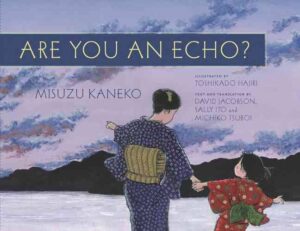
No surprises here. If you know me then you know I’m gaga for this title. For the purposes of today’s list, however, let’s just zero in on Kaneko’s own poetry. Cynical beast that I am, I would sooner eat my own tongue than use a tired phrase like “childlike wonder” to describe something. And yet . . . I’m stuck. Honestly there’s no other way to adequately convey to you what Kaneko has done so perfectly with this book. Come for the biography and history lesson. Stay for the incomparable poems.
Freedom Over Me: Eleven Slaves, Their Lives and Dreams Brought to Life by Ashley Bryan

I’m not entirely certain that I can express in words how deeply satisfying it’s been to see this book get as much love and attention as it has, so far. Already its appeared on Chicago Public Library’s Best of the Best, its been a Kirkus Prize Finalist, it was on the NCTE Notable Poetry List, and New York Public Library listed it on their Best Books for Kids. I would have liked to add an Image Award nomination in there as well, but you don’t always get what you want. Regardless, I maintain my position that this is a serious Newbery contender. Even if it misses out during the January award season, there is comfort in knowing that folks are finding it. Very satisfying.
Grumbles From the Town: Mother-Goose Voices With a Twist by Jane Yolen and Rebecca Kai Dotlich, ill. Angela Matteson
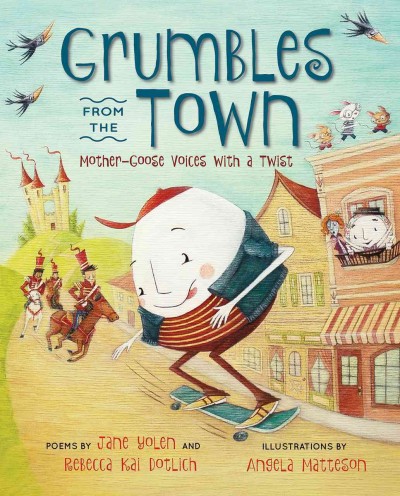
Its been promoted as a writing prompt book, but I’d argue that the poetry in this collection stands on its own two feet as well. Yolen and Dotlich take classic nursery rhymes and twist them. We’ve all seen that kind of thing before, but I like how they’ve twisted them. A passing familiarity with the original poetry a good idea, though they’ve covered their bases and included that information in the back of the book as well. Good original fun all around.
Jazz Day: The Making of a Famous Photograph by Roxane Orgill, ill. Francis Vallejo

So far it’s won the only major award (aside from the Kirkus prize) to be released so far for a 2016 title. Jazz Day took home the gold when it won in the picture book category of the Boston Globe-Horn Book Awards. And, granted, I was on that committee, but I wasn’t the only one there. It’s such an amazing book, and aside from poetry its hard to slot it into any one category. Fiction or nonfiction? You be the judge.
Miss Muffet, Or What Came After by Marilyn Singer, ill. David Litchfield
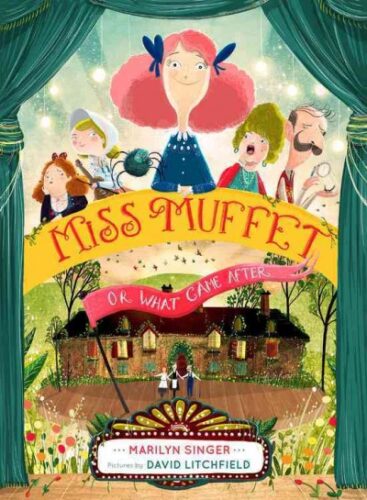
It’s sort of epic. From one single short little nursery rhyme, Singer spins out this grandiose tale of crushed hopes, impossible dreams, and overcoming arachnophobia. Since it’s a story told in rhyme I’m sort of cheating, putting it on this poetry list. Maybe it’s more school play than poetry book. I say, why not be both?
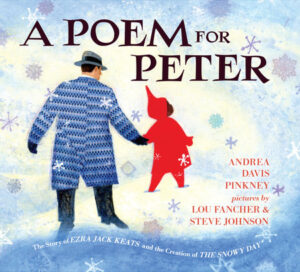
Now this book has been nominated for an NAACP Image Award, so there is some justice in this world. When I first read the description I wasn’t entirely certain how it would work. Imagine the daunting task of telling Ezra Jack Keats’ story using his own illustration style. Imagine too the difficulty that comes with using poetry and verse to tell the details of his story. Pinkney’s done poetry of one sort or another before, but I dare say this is her strongest work to date in that style.
Slickety Quick: Poems About Sharks by Skila Brown, ill. Bob Kolar
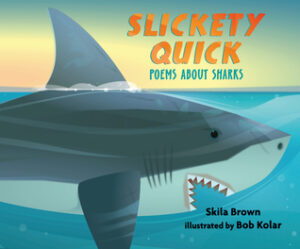
From the start I liked the poems (they were smart) but since it was about real sharks I pondered that question every children’s librarian knows so well: how would it fly with kids? Well, I donated a copy to my kid’s daycare and found, to my infinite delight, that the kids in that class were CRAZY about it. Every day when I went to pick my daughter up, she and the other kids would start telling me shark facts. You’ve gotta understand that these were four-year-olds telling me this stuff. If they get such a kick out of the book (and they do) imagine how the older kids might feel!
A Toucan Can, Can You? by Danny Adlerman, ill. Various
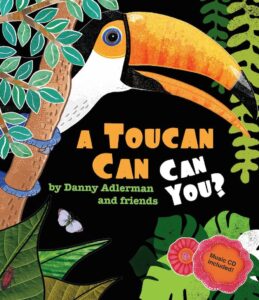
It’s baaaaack. Yeah, this little self-published gem keeps cropping up on my lists. Someone recently asked me where they could purchase it, since it’s not available through the usual streams. I think you can get it here, in case you’re curious. And why should you be curious? Because it takes that old How Much Wood Could a Woodchuck Chuck, expands it, and then gets seriously great illustrators to contribute. A lovely book.
Somo Como Las Nubes / We Are Like the Clouds by Jorge Argueta, ill. Elisa Amado
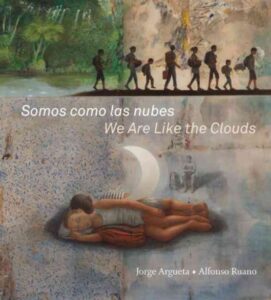
Because to be perfectly frank, your shelves aren’t exactly exploding with books about refugee children from South America. That said, it’s easy to include books on lists of this sort because their intentions are good. It’s another thing entirely when the book itself actually is good. Argueta is an old hand at this. You can trust him to do a fantastic job, and this book is simultaneously necessary and expertly done. There’s a reason I put it on my bilingual book list as well.
Spinach Dip Pancakes by Kevin Kammeraad, ill. Danny Adlerman, Kim Adlerman, Chris Fox, Alynn Guerra, Justin Haveman, Ryan Hipp, Stephanie Kammeraad, Carlos Kammeraad, Maria Kammeraad, Steve Kammeraad, Linda Kammeraad, Laurie Keller, Scott Mack, Ruth McNally Barshaw, Carolyn Stich, Joel Tanis, Corey Van Duinen, Aaron Zenz, & Rachel Zylstra
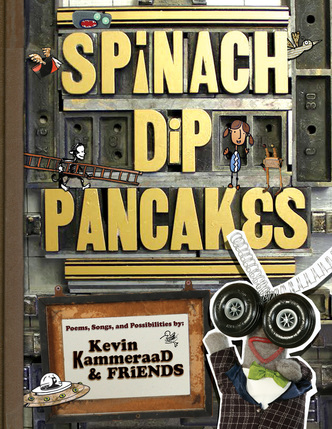
This book bears not a small number of similarities to the aforementioned Toucan Can book. The difference, however, is that these are all original little tiny poems put into a book illustrated by a huge range of different illustrators. The poems are funny and original and the art eclectic, weird, wise and wonderful. It even comes with a CD of performances of the poems. Want a taste? Then I am happy to premiere a video that is accompanying this book. The video cleverly brings to life the poem “Game”. I think you’ll get a kick out of it. And then be unable to remove it from your brain (good earworm, this).
If you liked that, check out the book’s book trailer and behind-the-scenes peek as well.
Wet Cement: A Mix of Concrete Poems by Bob Raczka
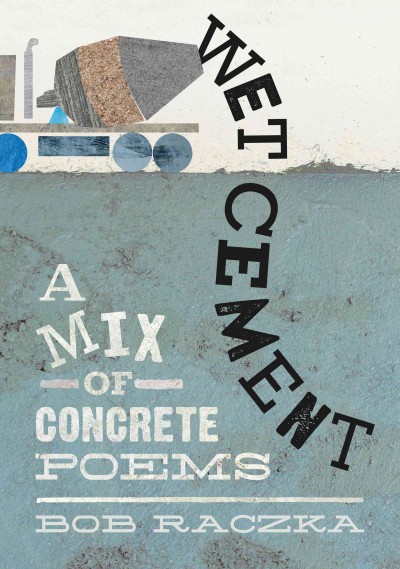
My year is not complete unless I am able to work a Raczka poetry collection onto a list. I’m very partial to this one. It’s a bit graphic design-y and a bit clever as all get out. Here’s my favorite poem of the lot:
Poetry is about taking away the words you don’t need
poetry is taking away words you don’t need
poetry is words you need
poetry is words
try
When Green Becomes Tomatoes: Poems for All Seasons by Julie Fogliano, ill. Julie Morstad
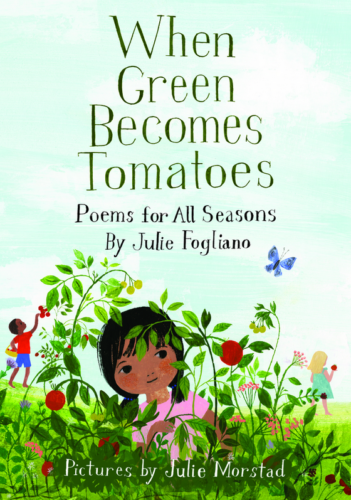
I think I broke more than a few hearts when I told people that Morstad’s Canadian status meant the book was ineligible for a Caldecott. At least you can take comfort in the fact that the poetry is sublime. I think we’ve all seen our fair share of seasonal poems. They’re not an original idea, yet Fogliano makes them seem new. This collection actually bears much in common with the poetry of the aforementioned Misuzu Kaneko. I think she would have liked it.
You Can Fly: The Tuskegee Airmen by Carole Boston Weatherford, ill. Jeffery Boston Weatherford
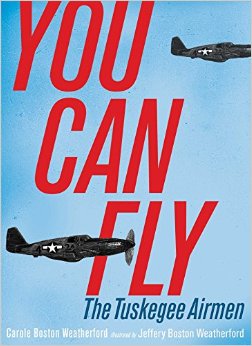
It’s poetry and a kind of verse novel as well. I figured I should include one in today’s list, though I’d argue that the verse here serves the poems better than the storyline. There is a storyline, of course, but I like the poetry for its own sake. My favorite in the book? The one about Lena Horne. I had no idea the personal sacrifices she made during WWII. There’s a picture book bio coming out about her in 2017, by the way. Looks like I’ll need to know more.
Interested in the other lists of the month? Here’s the schedule so that you can keep checking back:
December 1 – Board Books
December 2 – Board Book Adaptations
December 3 – Nursery Rhymes
December 4 – Picture Book Readalouds
December 5 – Rhyming Picture Books
December 6 – Alphabet Books
December 7 – Funny Picture Books
December 8 – Calde-Nots
December 9 – Picture Book Reprints
December 10 – Math Picture Books
December 11 – Bilingual Books
December 12 – International Imports
December 13 – Books with a Message
December 14 – Fabulous Photography
December 15 – Fairy Tales / Folktales
December 16 – Oddest Books of the Year
December 17 – Older Picture Books
December 18 – Easy Books
December 19 – Early Chapter Books
December 20 – Graphic Novels
December 21 – Poetry
December 22 – Fictionalized Nonfiction
December 23 – American History
December 24 – Science & Nature Books
December 25 – Transcendent Holiday Titles
December 26 – Unique Biographies
December 27 – Nonfiction Picture Books
December 28 – Nonfiction Chapter Books
December 29 – Novel Reprints
December 30 – Novels
December 31 – Picture Books

Blogger Shame Reading Challenge:
Host: Herding Cats and Burning Soup (
sign up)
Dates: January - December 2017
Mid Year Check In: First week of June
Wrap Up Post: Last week of December
# of books: MY GOAL is 52 books
Actually, my goal is closer to 104 books. But. We'll see!
My goal is 52 books:
20 books from 2016
1.
2.
3.
4.
5.
6.
7.
8.
9.
10.
11.
12.
13.
14.
15.
16.
17.
18.
19.
20.
20 books from 2015
1.
2.
3.
4.
5.
6.
7.
8.
9.
10.
11.
12.
13.
14.
15.
16.
17.
18.
19.
20. 12 books from 2007-2014
1.
2.
3.
4.
5.
6.
7.
8.
9.
10.
11.
12.
© 2016 Becky Laney of
Becky's Book Reviews
Merry Christmas From Betsy. Carolyn Haywood. 1970/89. 192 pages. [Source: Bought]
First sentence: Thanksgiving was hardly over when Betsy and the rest of the children in the first grade began talking about Christmas.
Premise/plot: Merry Christmas From Betsy is a collection of the Christmas chapters from previous books in the Betsy series by Carolyn Haywood. The stories are sweet and charming and cute. The stories aren't all focused on Betsy either. Her younger sister, Star, who makes her arrival on Christmas Day as the "present that Betsy always wanted" is also a huge part of the book. Some stories focus on the anticipation of Christmas coming, others on Christmas Day itself. All are worth your time.
My thoughts: Really, really enjoyed this one! I haven't read all the Betsy books, but, the few I've read I've really enjoyed. I like spending time with Betsy, Star, their family, their friends.
© 2016 Becky Laney of
Becky's Book Reviews
This week's Top Ten Tuesday subject from The Broke and the Bookish is Ten Books I'd like Santa to bring me.- 31 Verses to Write On Your Heart by Liz Curtis Higgs
- The Ology: Ancient Truths, Ever New by Marty Machowski
- The Radical Book for Kids: Exploring the Roots and Shoots of Faith by Champ Thornton
- Devoted to God: Blueprints for Sanctification by Sinclair B. Ferguson
- The Legacy of Luther by R.C. Sproul
- Evangelical White Lies by Mike Abendroth
- Saving the Bible from Ourselves: Learning to Read & Live the Bible Well by Glenn R. Paauw
- The Last Lion: Volume 1 by William Manchester
- The Last Lion: Volume 2 by William Manchester
- The Last Lion: Volume 3 by William Manchester and Paul Reid
© 2016 Becky Laney of
Becky's Book Reviews
Snow White by Matt Phelan is a breathtaking version of the Grimm tale of treachery and vanity.
Set in New York City during the Great Depression, Phelan removes almost all of the magic and keeps the evil and the charm.
Samantha (Snow) White's new stepmother is the Queen of the Follies - Ziegfeld's Follies. As soon as she enters Snow's family, she banishes Snow to boarding school. Then the new wife engineers the death of Snow's father, the King of Wall Street, to seize hold of his vast fortune, one of the few that remain after the Crash of 1929.
Phelan's gray scale drawings (with a breath of color and splashes of red) are full of emotion and action. (Cue swirling ominous music....)
December is a month of darkness, hearth sides, magic. It's a time to tell tales and imagine what else might exist in the cold. Gnomes, trolls, fairies made of snow flakes - imps that write on our attic windows while we sleep - as the lights come on, all those things might be true - out there - in the dark.
My favorite fairy tale -
East of the Sun, West of the Moon - takes place in the winter and stars a polar bear, a peasant girl and trolls. Just about perfect. The link will lead you to 44 retellings of this story.
Another winter story that haunts me is the Cinderella-like folktale
The Twelve Months or
Strawberries in the Snow. Marushka - and her name varies in the retellings - lives with her aunt and cousins (or sisters and stepmother) - and is treated cruelly. She is sent out in the dead of winter to find fresh strawberries. (One link will lead you to Rafe Martin's retelling; the other, to a whole Pinterest page of illustrations.)
Winter tales belong to the
D'Aulaires. Their books are full of creatures and mythology of the North. Scratchy colorful paintings offer stories of strange beings like ...trolls. Look for their books at your public library. Whenever I think of winter fairytales, Ingri and Edgar Parin D'Aulaire spring to mind.
A Torch Against the Night. Sabaa Tahir. 2016. 452 pages. [Source: Library]
First sentence: How did they find us so fast?
Premise/plot: A Torch Against the Night is the sequel to An Ember in the Ashes. It continues the life-and-near-death adventures of Laia, Elias, Keenan, and Helene. This time instead of two narrators, there were three. Helene has been added as a narrator.
Don't pick this one up if you've not read the first book.
My thoughts: Personally, I found the first half sluggish. But. I found the second half, particularly the last 100 pages to be really, really GOOD and oh-so-compelling. I'm not sure why I found this to be an uneven book. I am very glad I stuck with it. I can definitely say it's worth reading, because once it becomes good, it's GOOD.
The characters I cared about most were Laia and Elias. Their chapters were the ones I really looked forward to. I got swept up into their stories, their lives. And all was well. The Helene chapters were necessary, I suppose, because they give readers information that they wouldn't otherwise have. (A behind-the-scenes look at the enemy's plans.) But Helene's chapters felt like a third wheel.
This one has a couple of twists that are good and solid, in my opinion.
© 2016 Becky Laney of
Becky's Book Reviews
So Kailana (
The Written Word) and I are teaming up again...this time to celebrate CHRISTMAS. 25 days of answering questions! You are definitely welcome to join in on the fun!
Did you ever try to sneak a peek at presents early? Are you a present shaker?!
I never snooped into where unwrapped presents might be. However, once it was wrapped...it was fair game. I am speaking, of course, of the past. You can tell a lot about what something is based on the shape and size. And the sound it makes--or does NOT make when you move it. A book, for example, you can always tell is a BOOK even if you don't know *which* book. I was an expert at spotting Barbie boxes.
© 2016 Becky Laney of
Becky's Book Reviews
It's Tuesday! Write. Share. Give. 
View Next 25 Posts



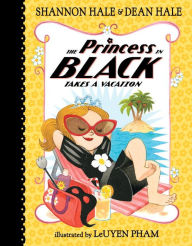





























































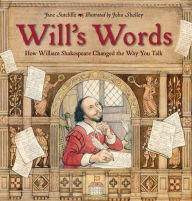















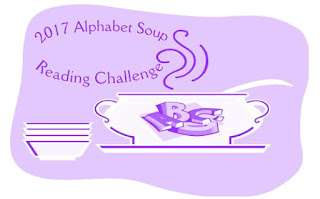
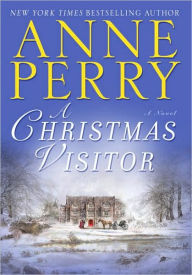
















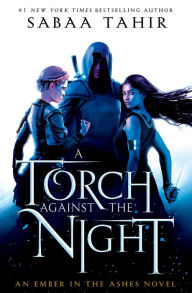
Merry Christmas!!